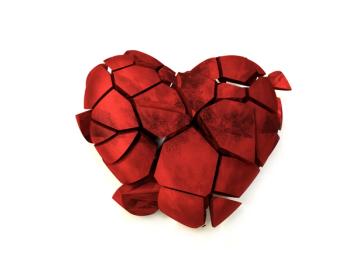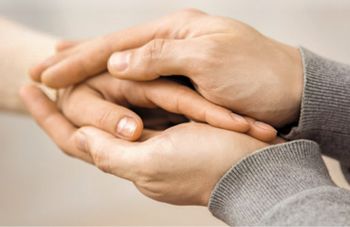
- Vol 33 No 11
- Volume 33
- Issue 11
A Flood of Losses
Now, when I think back O.P's plight and isolation, I marvel that he could remain standing. He reminds me of many other courageous young men-the writer, the newly graduated physician, and all the others whom I treated and who died of AIDS. He also reminds me of the vibrant gay community that was destroyed by a microscopic retrovirus.
⇒Life is about bonding, but it is also filled with loss. “Life is loss,” an early mentor once reminded me.
In the early 1980s, whole communities-and eventually nations-were decimated by an unforeseen plague. It began in southern California, where young healthy gay men contracted Pneumocystis carinii pneumonia and other opportunistic infections (OIs) found in the immunosuppressed. In 1981, in New York City, physicians found a rare tumor in the same group; the tumor was Kaposi sarcoma (KS) and was usually found in elderly men of Eastern European descent.
Pneumocystis and the “gay cancer” were spreading among the gay men of Greenwich Village, where I had recently opened my psychiatry practice. Greenwich Village is an area of lower Manhattan with a history of artistry and iconoclasm. In the early 1980s, it was also the home of a vibrant gay community. It was the rare place in America where gay people could walk hand-in-hand and display affection. It was also a font of creativity, filled with the shops of artisans, designers, and antique dealers.
At the time, I received many referrals from primary care colleagues and I began to take gay men as patients. Many had KS/OI and were facing death. I was there to help them with their rage against the dying of the light,1 and I was as helpless as they were. They were so young! They had people they loved, and their lovers were dying as fast and tragically as they were. They were so unprepared. They had books in publication, they had patients in their offices, they had antiques to buy and sell. And their physicians had no treatments. (AZT was not approved until 1987.)
One day, O. P. walked into my office, referred by a friend. I had prepared myself for another story of sickness and imminent death, but O. P. did not have the virus. He was a young, gay entrepreneur who was physically healthy but emotionally devastated. “I cannot control my emotions,” he told me. “I’ve lost more than 50 friends to GRID. To AIDS. One was my lover.”
I knew that GRID (gay-related immune deficiency) was the term used by researchers before they learned that the virus, and immune deficiency, went well beyond gay men to hemophiliacs, straight partners, infants, and others. In gay communities, GRID was known before AIDS.
“Why are you coming in now?”
“Someone from my grief group killed himself. When that happened, it triggered a flood of losses. Now everything triggers terrible memories.” The sound of a patient using a pentamidine nebulizer in his doctor’s office triggered memories of his lover on the respirator in the intensive care unit at the local hospital. Even his grief group was unhelpful to him because “each new member reminds me of what I’ve lost.”
He was having an anniversary response to the loss of another friend, who had died 2 years earlier after great suffering. He was guilty that he was not there when the friend died. He felt equally guilty that he had not known his grief-group friend was suicidal.
He could not grieve for his lover because he could not talk about their love. He was a grieving widow, but his friends could not validate his widowhood. O. P. had only recently renewed his relationship with his former lover, before the lover died. He spoon-fed his lover, bathed his feet, and cared for him for months-but because they did not live together and because his lover had other lovers before, he felt he could not claim to be his widow. His sense of rage and isolation overwhelmed him. When caring for his lover, he was constantly frustrated at attempts to get him the best of care; the insurance companies were often deaf to requests for coverage. The national government was failing him and his friends. He wondered if he could ever freely express his homosexuality again.
From my work with the gay community, I was well aware of President Reagan’s silence and his failure to fund research, and the blame coming from the top-where AIDS was seen as the wrath of God visited upon gays. I was aware of the AIDS activism in the Village, of Gay Men’s Health Crisis, and of attempts to raise money and awareness. I was also mindful of the shunning of gay men by the straight community because of beliefs that they brought it upon themselves and because of fears among straights that they could catch it. Although the modes of transmission were identified in 1983, people remained uninformed and fearful. After all, Ryan White, the young hemophiliac with AIDS, was banned from school in 1985 due to “the inherent fear that would generate among classmates.”2
Ultimately, O. P. expressed the self-destructive urge to go out, have sex, contract AIDS, and die.
O. P. had a major impact on me at the time and in the years since. At the time, I was living in the East Village. Over several months, I watched as my upstairs neighbor and friend was wasted by AIDS. One night, flashing lights alerted me to the arrival of an ambulance at the gate and, as I watched through the window, I saw my neighbor carried out on a stretcher in a black body bag. As I remember, the body bag was very small, much like that of a child. As I grieved, I thought of O. P. with his flood of losses.
Since my encounter with O. P., there has been research into the population of O. P.s-those men who remain resistant to HIV infection despite sex with HIV-positive partners-and further research into other “exposed-uninfecteds.” Many questions remain.
For me, O. P. was not someone to be explored for biological correlates of an effective immune response. For me, this man was the one tree left standing alone in a decimated forest.
He was alone because he lost so many friends and his lover to AIDS. He lost the very people who had become his family and who substituted for the biological family that rejected him because he was gay. He was alone because he could not be a grieving widow. He was alone because he was shunned by his government and by those who feared he was contagious. He was alone because he was losing his identity as a gay man.
Now, when I think back on his plight and isolation, I marvel that he could remain standing. He reminds me of many other courageous young men-the writer, the newly graduated physician, and all the others whom I treated and who died of AIDS. He also reminds me of the vibrant gay community that was destroyed by a microscopic retrovirus.
After years of death from HIV/AIDS, the gay Village was smaller. As the epidemic began to wane, I took a walk down Christopher Street. I was grieving the Village and envisioning all the inhabitants who had died. I looked for the artisan’s shop where I’d bought my office desk a few years earlier. The shop, with its hand-carved furniture pieces and friendly owner, was gone. It was replaced by a pizza parlor.
Disclosures:
Dr. Woesner is Director of Medical Student Training at the Bronx Psychiatric Center in New York City. She is also Associate Clinical Professor, Department of Psychiatry and Behavioral Sciences, at the Albert Einstein College of Medicine, Montefiore Medical Center, Bronx, NY.
References:
1. “Do Not Go Gentle Into That Good Night,” by Dylan Thomas, who visited and died in the Village.
2. MacNeil CH. School bars door to youth with AIDS. Kokomo Tribune. August 31, 1985.
Articles in this issue
about 9 years ago
Introduction: CAMs and the Future of Mental Health Careabout 9 years ago
The Use of Meditation in Children With Mental Health Issuesabout 9 years ago
DSM-5 and Paraphilias: What Psychiatrists Need to Knowabout 9 years ago
The Stranger in Our Midstabout 9 years ago
The Patient’s Son Is Normalabout 9 years ago
New Evidence Suggests Media Violence Effects May Be Minimalabout 9 years ago
Psychiatric Ethics and Cultural SensitivityNewsletter
Receive trusted psychiatric news, expert analysis, and clinical insights — subscribe today to support your practice and your patients.

















